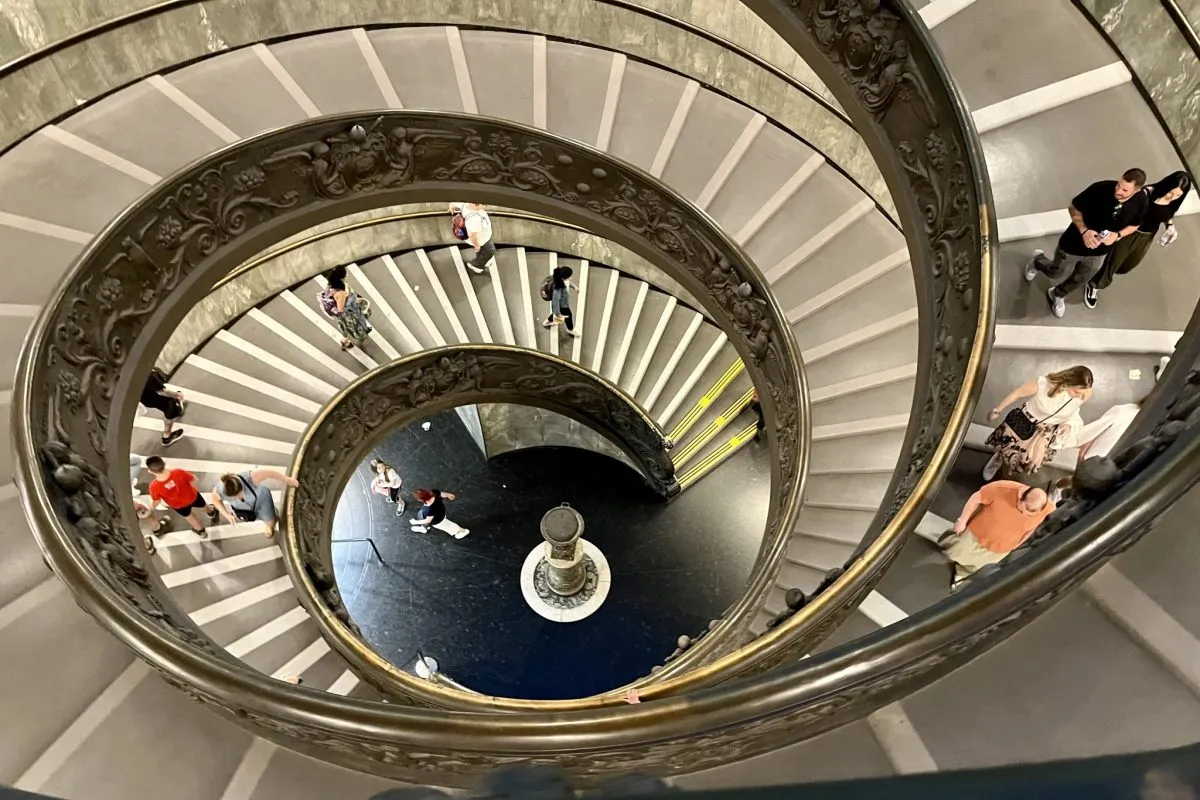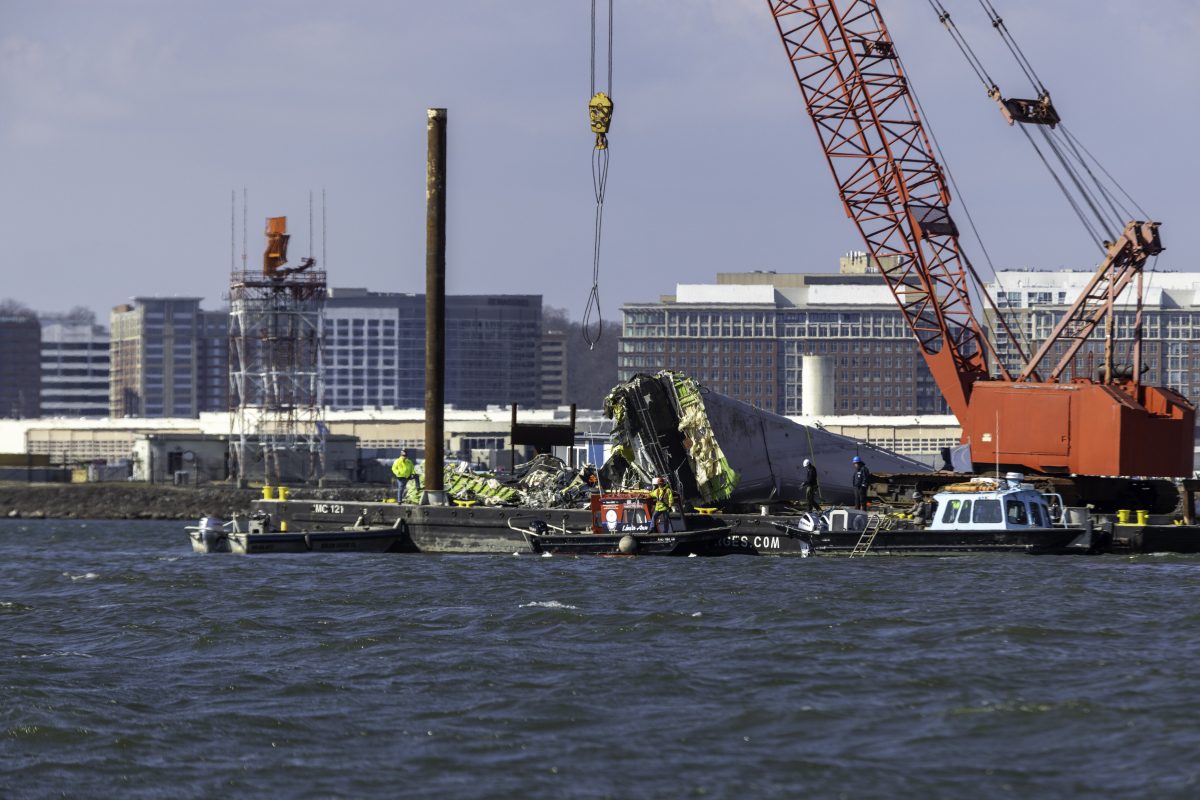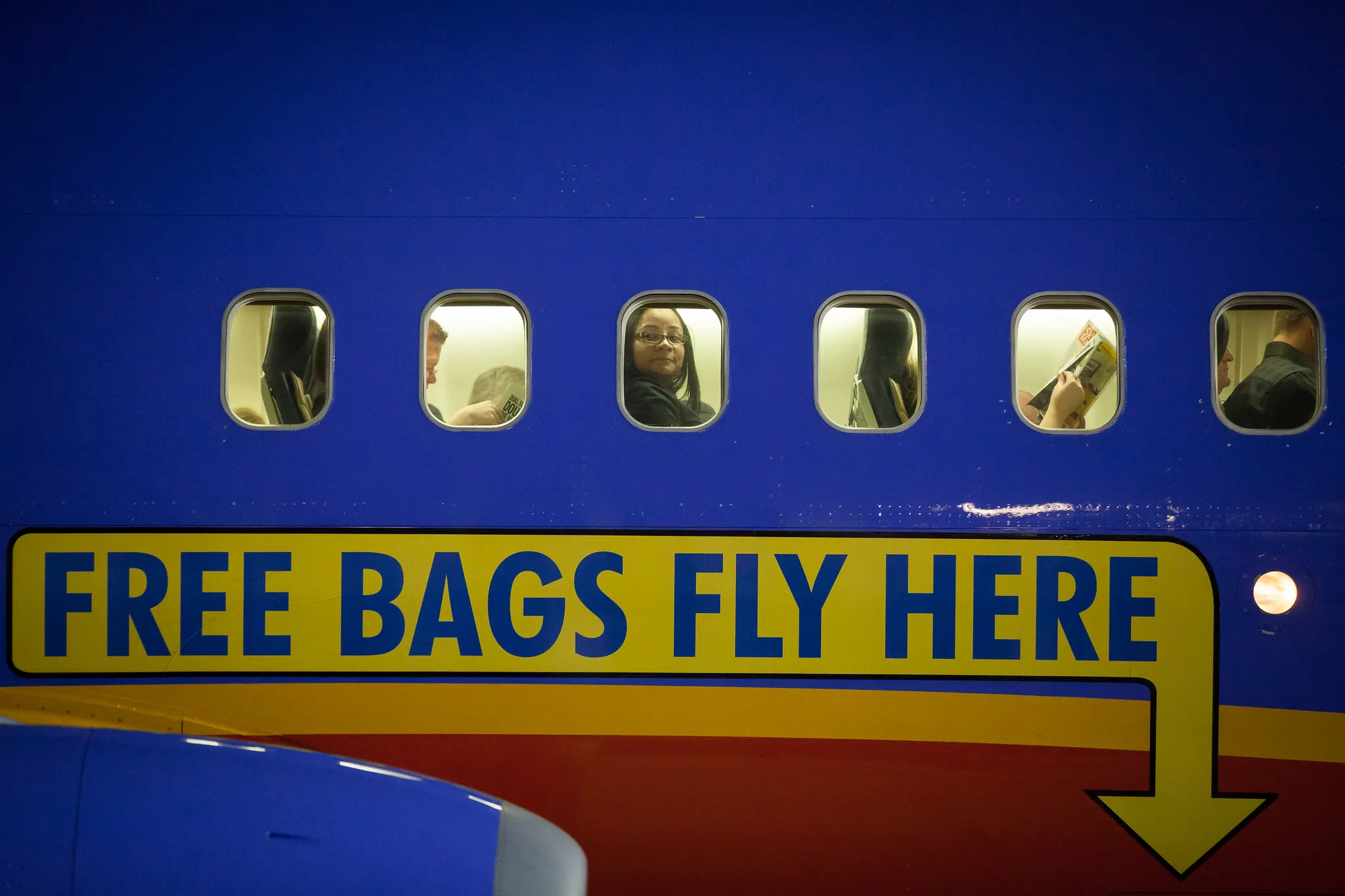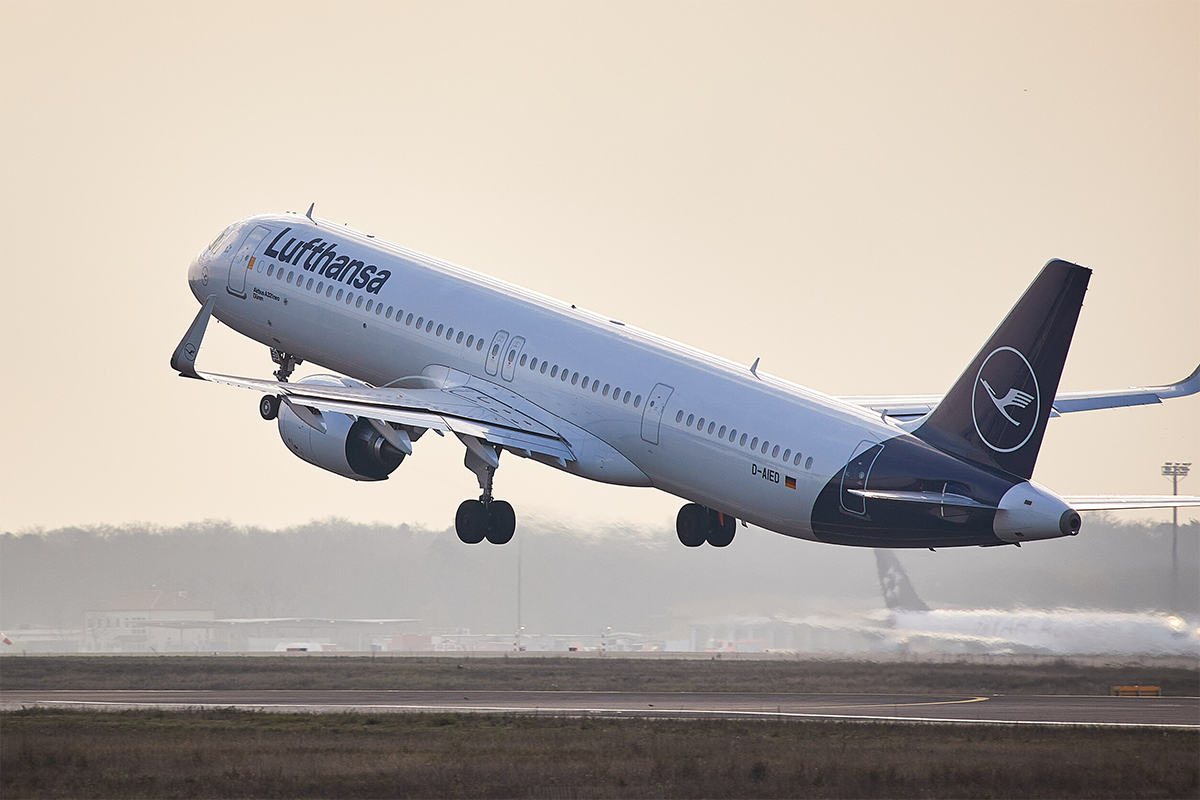U.S. travel spending slowed growth in second quarter
Skift Take
Travel and tourism spending grew in the second quarter of 2012, and so did gross domestic product, but their growth rates slowed when compared to the first quarter.
Both did not react equally, though: The growth in travel and tourism spending decelerated much faster than the slowed growth in GDP.
Those are some of the findings in a just-released U.S. Commerce Department report on travel and tourism spending and pricing in the second quarter.
Travel and tourism spending
In the April to June quarter, according to the department's Bureau of Economic Analysis, travel and tourism spending, which totaled $1.4 trillion, jumped at an annual rate of 2.1%, and that was a much slower increase that the 4.9% rise in the first quarter of 2012. Travel and tourism spending includes spending by tourists for goods and services, and spending by suppliers such as when hotels and restaurants buy bedsheets or tablecloths.
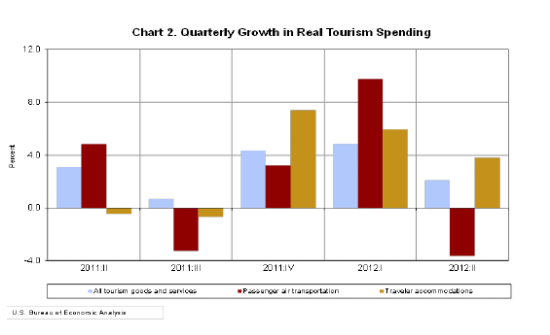
In the two charts on this page, blue represents all tourism goods and services, red stands for passenger air transportation, and yellow signifies traveler accommodations.
The slowed growth in travel and tourism spending in the second quarter occurred within the following context: GDP increased 1.7% in the second quarter, on the heels of an increase of 2% in the first quarter of 2012.
So the figures show that travel and tourism spending slowed its growth more severely than did GDP.
Airlines showing their clout
The deceleration of travel and tourism spending was primarily driven by a "downturn" in passenger air transportation, which dipped 3.6% in the second quarter, the BEA says. And, that represented a reversal of first quarter air passenger transportation trends because, instead of declining, air passenger transportation rose 9.8% in the January to March period.
An increase in traveler spending on hotels and other accommodations in the second quarter wasn't enough to offset the decline in passenger air transportation.
"Real spending on traveler accommodations decelerated, increasing 3.8% in the second quarter after increasing 5.9% in the first quarter," the BEA states.
Tourism prices also decelerated in second quarter
Tourism prices for goods and services also decelerated in the second quarter, as prices for passenger air transportation decelerated, as they were weighed down by falling fuel prices, the BEA says.
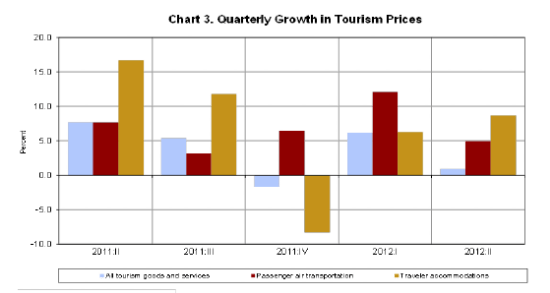
Blue represents all tourism goods and services, red stands for passenger air transportation, and yellow signifies traveler accommodations
But, while tourism prices decelerated overall in the second quarter, prices in traveler accommodations accelerated, rising 8.7% in the second quarter compared with a 6.3% hike in the first quarter.
In other words, hotel prices in the second quarter increased faster than in the first quarter, while air passenger transportation price increases in the second quarter couldn't keep pace with growth rates in the first quarter.

